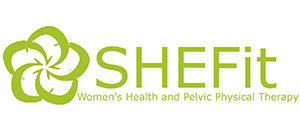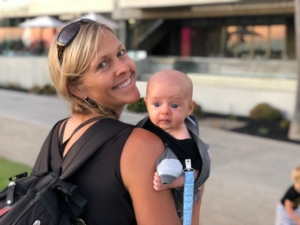Why Should You See A Pelvic Floor Physical Therapist Postpartum?
By Dr. Meghan Krill, DPT
We believe that every woman should see a pelvic health physical therapist after having a baby (as well as before!).
In France, every woman who has delivered a baby is automatically referred for for 10 physical therapy sessions to “re-educate” her pelvic floor. (Australia, Canada, and the UK are starting to move that way as well!)
Whether cesarean or vaginal birth, each woman presents her own unique set of challenges, needs and goals postpartum. The French recognize that women deserve individualized postpartum rehab – NOT a “one-size-fits-all”, online, or “do-it-yourself” solution. Pre/postnatal pelvic floor physical therapists can help address a broad variety of situations that may bother women after birth through individualized rehab!
Evidence-based recommendations suggest that beginning a low-impact strength program as early as weeks 0-2 postpartum is optimal for recovery. (NOT going straight back to pre-pregnancy workouts after doing nothing for 6 weeks.) Doing physical therapy for your pelvic floor after giving birth can address short-term concerns AND preempt long-term issues that may arise far down the road from your delivery date.
We have put together a list of the most common issues we see in postpartum patients and will further discuss how we address these issues in future blog posts.
1. Diastasis Recti
Diastasis recti is the widening of the ligament between the muscle bellies of the rectus abdominis (your “6-pack”) due to increased intra abdominal pressure and stretching of the abdominal wall as your baby grows. The abdominal muscles play a huge role in stabilizing the spine and transferring force between extremities, so this is an important change to address! Resolving this issue requires learning proper pressure management and deep core engagement techniques. (And it’s not always as simple as the online ads make it seem.) SHEFit PTs are EXPERTS in rehabbing DRA!
2. Leakage
One in three women will experience urinary incontinence or “leakage” postpartum, as well as urinary freqyncy or urgency. Leakage is also common during pregnancy. As your baby grows, increased pressure is exerted on the bladder and pelvic floor. This pressure can be difficult to control, particularly with coughing, laughing sneezing, or jumping. During vaginal birth the pelvic floor muscles are severely stretched, often torn (see next point), and regaining control of the bladder requires retraining of these pelvic floor muscles. Sometimes strengthening is the answer, but often it is more complex than that and relaxation training and coordination work are also necessry.
3. Pelvic Pain and Pain with Sex
Up to 9 in every 10 first time mothers who have a vaginal birth will experience some sort of tear, graze or episiotomy. Regardless of birth injury, every woman experiences some degree of pain or discomfort after vaginal or cesarean delivery. Pain can be related to scar tissue, muscle spasm, or other factors. Returning to intercourse and regaining sexual pleasure after birth can require both physical and emotional preparation – pelvic PT can help!
4. C-section Scar Discomfort
33% of all births in the US are Cesarean sections. Many people forget that this is a major surgery! Most women have difficulty sensing the region and engaging the muscles surrounding the scar postpartum. Scars can become thickened and there can be discomfort due to scar tissue or muscle spasm. As soon as the incision is healed, a physical therapist can help regain sensation in that region and prevent scar tissue build-up by mobilizing the scar and retraining the core.
5. Return to Activity
For many women, returning to activity after childbirth is more difficult than expected. Whether the goal is to be able to pick up your child without pain, to run a marathon, or to get back to your sport, our physical therapists at SHEFitPT help each patient develop individually-tailored rehab and exercise programs to get you back to the activities you love.
It is important to note that this list is not comprehensive and not all patients have a definitive physical concern (download our free handout for more). Many women simply do not feel like themselves, and coming to physical therapy post-birth can help you identify what’s “off” and ensure your body is healing well.
Mamas always ask, “when after birth should I start PT?” Clearly we recommend starting before birth (see our prior post), but it’s never too late! We recommend checking in about 3-4 weeks postpartum. You can come into the clinic when you feel ready, or meet with your PT online from home. Your PT will then make a recommendation on frequency and timing for follow-ups to get the best results.
If you have questions be sure to send us a message via the contact form, or schedule your evaluation here! We hope you will come visit us soon at SHEFitPT!
To learn more about how to recover well after birth, sign up for our FREE online workshop here!


